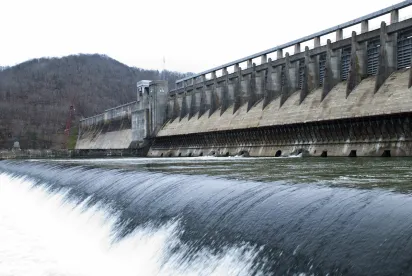Daines and Cantwell Introduce Landmark Bipartisan Hydropower Bill
On May 10, 2023, U.S. Senator Steve Daines (R-Mont.) and U.S. Senator Maria Cantwell (D-Wash.) introduced legislation entitled the “Community and Hydropower Improvement Act” (“Bill”). The Bill, if enacted, would represent the most comprehensive amendment of Part I of the Federal Power Act (“FPA”), governing the Federal Energy Regulatory Commission (“FERC” or “Commission”) licensing and relicensing of non-federal hydropower projects, since 1986. The Bill is one of the products of Stanford University’s Uncommon Dialogue on Hydropower, River Restoration, and Public Safety, and brought together stakeholders from historically opposing sides of the issues to find mutually agreeable solutions on licensing reform, better inclusion of Tribal input, and federal decision-making coordination.
Tying License Conditions to Project Effects
The Bill would codify existing case law to make clear that mandatory license conditions submitted by federal land management agencies and Indian Tribes under Section 4(e) of the FPA must be reasonably related to project effects on the federal lands and their uses. Licensees will not be responsible for mitigating adverse impacts that are not project-related. Similarly, the Bill would amend FPA Section 18 expressly to tie mandatory fish passage requirements by the U.S. Fish and Wildlife Service (“FWS”) and National Marine Fisheries Service to project effects.
The proposed legislation would add a definition of “project effects” to mean the “ongoing effects” and “reasonably foreseeable effects” of a project. An agency or Tribe determination of a project effect must be based on generally accepted scientific methods. Further, the Bill would exclude from project effects original impacts of dam construction in the case of an existing project. This is consistent with FERC’s policy on the environmental baseline at relicensing. The Bill further provides for consideration of downstream habitat improvements and off-site mitigation as an alternative to fish passage.
Increasing the Role of Tribes in FERC Licensing
The proposed legislation would make transformative changes in the role of Indian Tribes in the hydropower licensing process. First, the Bill would transfer authority to set mandatory Section 4(e) license conditions for any project located on an Indian reservation from the Department of the Interior to the Tribe, deferring to Tribes’ own understanding of what conditions would best protect the purposes of their lands. Second, the Bill would replace “tribal lands embraced within Indian reservations” with the more inclusive “land and interests in land held in legal title by the United States in trust for the benefit of an Indian Tribe” in the definition of lands to which the Tribal 4(e) authority would apply. Third, the Bill would require federal land management agencies, when developing their Section 4(e) conditions, to consult with the Secretary of the Interior and any potentially affected Tribes regarding adjudicated treaty rights that could be affected by the project. Fourth, in cases of fish and wildlife resources covered by off-reservation treaty rights, the proposed legislation would amend Section 10(j) of the FPA to put Tribes on an equal footing with state and federal fish and wildlife agencies in recommending protective measures to FERC. Fifth, the Bill would codify existing law to require FERC and any other federal agency setting license conditions to do so in a way that meets adjudicated treaty rights.
Streamlining FERC Licensing
The Bill contains a number of provisions intended to simplify, speed up, and reduce the cost of the FERC licensing process. Those streamlining measures include:
-
Requiring FERC and other agencies and Tribes with permitting responsibility over a project licensing to develop a coordinated schedule and joint study plan to facilitate timely decision making.
-
Requiring FERC to invite other agencies and Tribes with environmental review responsibility under the National Environmental Policy Act (“NEPA”) or similar laws to become cooperating agencies on FERC’s NEPA document.
-
Requiring use of relevant existing studies and data to avoid unnecessary costs and duplication of study efforts.
-
Establishing a two-year licensing process for new hydroelectric facilities at non-powered dams which would not result in changes in dam operation; the dams and their operations would remain under state and local regulation.
-
Establishing a three-year licensing process for closed-loop and off-stream pumped storage projects that meet certain environmental criteria.
The Bill would not make any changes to Section 7 of the Endangered Species Act or Section 401 of the Clean Water Act (“CWA”), often cited by FERC and industry commentators as chronic sources of delay in the hydroelectric licensing process.
SCOTUS' Sackett Decision Adopts Narrow View of CWA Jurisdiction
On May 25, 2023, the U.S. Supreme Court constrained the jurisdictional reach of the CWA, issuing a ruling that limited the ability of the federal government to regulate certain wetlands by adopting a narrow interpretation of “waters of the United States” (“WOTUS”).
In Sackett v. Environmental Protection Agency, the Court ruled that the wetlands on the Sacketts’ property were not subject to CWA jurisdiction, concluding that “adjacent” wetlands are subject to the CWA only when they are “as a practical matter indistinguishable from waters of the United States,” such that it is “difficult to determine where the ‘water’ ends and the ‘wetland’ begins” and there is “no clear demarcation between ‘waters’ and wetlands.”
The CWA protects “navigable waters,” defined as “the waters of the United States, including the territorial seas.” But the statute does not further define WOTUS, leading to decades of dispute through litigation and agency rulemaking spanning multiple administrations. The 2006 Supreme Court Case, Rapanos v. United States, failed to lend much clarity, delivering a plurality decision that set forth competing tests for determining whether certain wetlands were subject to CWA.
Most hydroelectric projects are subject to CWA requirements as they are located on rivers and streams. However, the Sackett decision likely will have implications for permitting of project linear features such as access roads and transmission lines that cross wetlands. The Sackett decision did not address another issue that sometimes arises with hydroelectric projects that divert water from rivers and streams into canals and other artificial conveyance systems to serve water supply, irrigation, and other consumptive uses, i.e., when do waters of the United States cease to be waters of the United States?
This VNF alert provides a more in-depth treatment of the Sackett decision, including its impact on future rulemakings.
Debt Ceiling Bill Includes NEPA Reform
The Fiscal Responsibility Act passed by Congress to raise the national debt ceiling and avoid default by the United States on its debt also included what some have characterized as the first significant step toward federal permitting reform. The Act amends NEPA in a number of ways to help streamline federal permitting:
-
Narrows agency considerations to “reasonably foreseeable environmental impacts of the proposed agency action” and “a reasonable range of alternatives to the proposed action” that are “technically and economically feasible, and meet the purpose and need of the proposal.”
-
Codifies key elements of the One Federal Decision framework, including: identification of a lead agency to supervise the environmental document and designate cooperating agencies; development by the lead agency of a master schedule in consultation with cooperating agencies, the applicant, and others; and procedures to elevate delays or disputes. The law also sets page limits for environmental documents and time limits of one year for environmental assessments and two years for environmental impact statements. It provides a right of action to project applicants if statutory deadlines are not met.
-
Includes threshold considerations for agencies assessing whether NEPA applies to a proposed activity and facilitates agency adoption of categorical exclusions.
-
Allows project proponents to assist in preparing environmental documents under the supervision of the lead agency.
-
Limits a “major Federal action” to those which are “subject to substantial Federal control and responsibility.”
-
Authorizes agencies to make use of any reliable data source and clarifies that NEPA does not require undertaking new scientific and technical research unless essential to a reasoned choice among alternatives and the new information can be obtained at a reasonable time and cost.
-
Adds energy storage to the list of covered projects eligible for streamlining under the Fixing America’s Surface Transportation Act.
Please find our most recent alert for a deeper dive into the permitting reform.
FWS Publishes Revised Compensatory Mitigation Policies
On May 15, 2023, FWS published its revised Mitigation Policy and Endangered Species Act Compensatory Mitigation Policy, introducing new standards and obligations to project proponents and species conservation bank sponsors when it comes to mitigating impacts to resources.
The revised policy brings back Obama-era policies enacted in 2016 and later repealed during the Trump administration. One major deviation from the 2016 policies is the removal of net conservation gain as a mitigation planning goal. The Service clarified in the recently published policy that its mitigation planning goal is “to maintain the current status of affected resources (i.e., no net loss),” and that its recommendations and requirements would focus on “important, scarce, or sensitive” resources.
The revised policy also incorporates concepts from three U.S. Supreme Court opinions—Koontz v. St. Johns River WMD, Nollan v. California Coastal Commission and Dolan v. City of Tigard—that called for an “essential nexus” between an action’s effects and compensatory mitigation, as well as proportionality of the mitigation measure to the action’s effect. The revised policy aligns with the Koontz case and other relevant court decisions, adding both nexus and proportionality as fundamental principles. Essentially, the revised policy states that appropriate mitigation measures “must have a clear connection with the anticipated effects of the action and be commensurate with the scale and nature of those effects.”
The Mitigation Policy and ESA Compensatory Mitigation Policy will influence the types of actions that qualify as mitigation, serving as an umbrella policy for all guidance and requirements for future activities. They are, however, non-binding and do not establish legally enforceable rules.
President Biden Signs Executive Order Advancing Environmental Justice Goals
On April 21, President Biden signed Executive Order (“EO”) 14096, Revitalizing Our Nation’s Commitment to Environmental Justice for All, a new EO that aims to advance environmental justice through a range of actions, from requiring agencies to create environmental justice strategic plans, to establishing a new EJ Interagency Council and White House Office of Environmental Justice.
The new EO builds on the Biden White House’s “whole-of-government” approach to environmental justice, and on President Clinton’s EO 12898, which aimed to achieve environmental protection for all communities.
The new EO increases federal agencies’ accountability on environmental justice goals, requiring them to create environmental justice strategic plans and conduct a biannual evaluation of their efforts. It also mandates agencies to ensure that all federally funded activities do not use discriminatory criteria, policies, practices, or methods of administration based on race, color, or national origin.
Supplemented definitions and terminologies also appear in the new EO. Among other changes, it broadens the definition of “environmental justice,” removing the “disproportionately high” threshold for disproportionate and adverse effects under President Clinton’s EO 12898. The change opens the possibility for a lowered threshold on what types of environmental justice impacts must be addressed. While the EO does not define what communities qualify as EJ communities, the language casts a wide net, including “a significant proportion of people of color,” “a significant proportion of people who have low incomes or are otherwise adversely affected by persistent poverty or inequality,” and “geographically dispersed and mobile populations.”
The EO creates a number of additional changes, including a more prominent role for NEPA in how agencies evaluate environmental justice, a new White House Office of Environmental Justice within the Council for Environmental Quality, and increased public involvement in agency decision-making.
DOE Opens Up the 2023 Application Process for Section 247 Hydroelectric Incentives
On May 8, the U.S. Department of Energy’s (“DOE”) Grid Deployment Office (“GRO”) issued an application guidance for the Maintaining & Enhancing Hydroelectricity Incentive Program (EPAct 2005 Section 247). Along with the release of this guidance, GRO opened up the 2023 application period, and are accepting Letters of Intent (“LOI”), which must be filed in order for applicants to be eligible to file full applications. The Section 247 program provides payments of up to $5 million per project, and up to 30 percent of the total cost, of certain types of capital improvements for dam safety, grid reliability, and environmental enhancement.
To apply for incentive payments under Section 247, qualifying hydro facilities:
-
Must be operating under a FERC license or exemption, or be a project constructed, operated, and maintained under a pre-1920 permit;
-
Must have been placed into service before November 15, 2021; and
-
Must be in compliance with all applicable federal, Tribal, and state requirements, or will be brought into compliance as a result of the improvements carried out with the incentive payment.
Important dates:
-
LOIs to be filed no later than 5 PM EST June 22, 2023.
-
Full applications will be accepted June 23 through 5 PM EST October 6, 2023.






 />i
/>i

